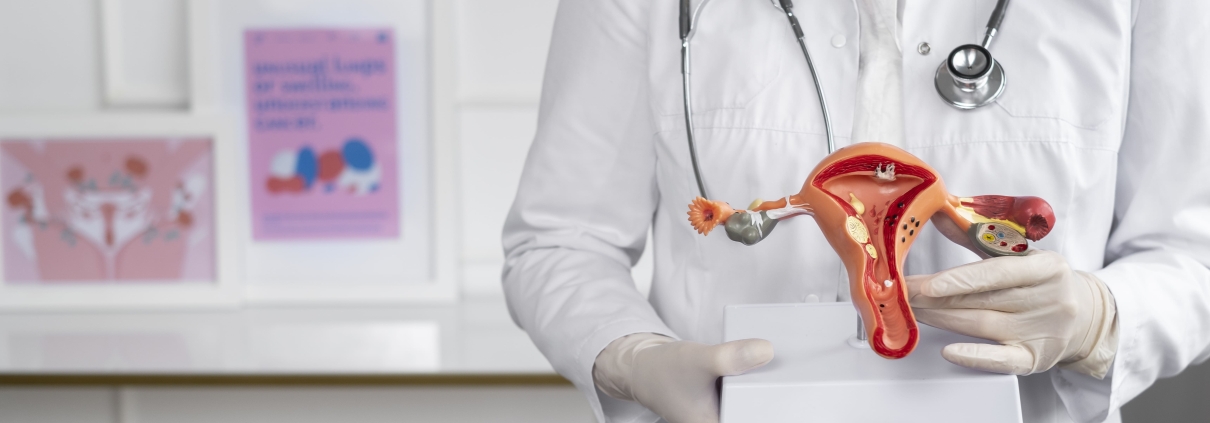How Uterine Fibroid Embolisation Works: A Simple Guide
Uterine fibroid embolisation (UFE) is a non-surgical procedure designed to shrink fibroids by cutting off their blood supply. If you’ve been wondering how uterine fibroid embolisation works, the process is more straightforward than it sounds. A small tube, called a catheter, is inserted through an artery, usually in the wrist or groin, and guided to the blood vessels that feed the fibroids. Once in place, a specialist sends tiny particles through the tube to block blood flow to the fibroid. With less blood to feed on, the fibroids gradually shrink, easing symptoms like heavy periods, pressure, and pain.
How Uterine Fibroid Embolisation Works: A Simple Breakdown
What to Expect When Undergoing How Uterine Fibroid Embolisation
A major advantage of UFE for many women is that it avoids surgery. Understanding how uterine fibroid embolisation works helps explain why more people are choosing it. The procedure is done with mild sedation, not general anesthesia. Most women go home the next day. Because no incision is made in the abdomen, recovery tends to be quicker than with traditional methods. Within a few weeks, many say they feel a significant difference in their symptoms.
How Non-Surgical Fibroid Treatment Works to Preserve the Uterus
One reason women explore how non-surgical fibroid treatment works is because traditional surgeries will probably remove the uterus completely. In contrast, UFE keeps the uterus intact. This matters to those who want to keep their fertility options open or simply prefer to avoid major surgery. How non-surgical fibroid treatment works is by targeting just the fibroids, leaving healthy tissue untouched. It’s an effective way to reduce symptoms without the risks of a large operation.
Why It Matters to Understand How Uterine Fibroid Embolisation Works
Knowing how uterine fibroid embolisation works empowers more women to make confident choices about their health. It’s a targeted, minimally invasive option that offers real relief, without the long downtime of surgery. As awareness grows, more women across South Africa are choosing to treat fibroids with this modern approach. It offers fewer complications, less scarring, and a faster return to normal life. If you’re looking for ways to treat fibroids without surgery, understanding how non-surgical fibroid treatment works could help you take the next step.
How Uterine Fibroid Embolisation Works: Step-by-Step
Understanding how uterine fibroid embolisation works starts with knowing what to expect before, during, and after the procedure. It begins with a few routine preparations like a pregnancy test, since X-rays are involved, and blood work to ensure you’re ready. You’ll receive IV sedation and antibiotics to keep you relaxed and reduce the risk of infection.
Next comes the main part. A tiny incision is made, usually in the groin or wrist, to access an artery. Through this opening, a radiologist carefully threads a thin tube, called a catheter, through your blood vessels. With the help of X-ray imaging and contrast dye, the catheter is guided to the arteries supplying blood to the fibroids.
How Uterine Fibroid Embolisation Treats Fibroids
Once in place, the radiologist releases tiny particles through the catheter to block blood flow to the fibroids. This process effectively starves them of nutrients, causing them to shrink naturally over time. This targeted approach is key to how uterine fibroid embolisation works and avoids the need for surgery.
A follow-up X-ray confirms that the embolisation is complete. The catheter is gently removed, and the incision site is closed—largely with a basic bandage. Most patients stay overnight in the hospital for monitoring and pain relief, as some cramping can happen after treatment.
How Non-Surgical Fibroid Treatment Works With UFE
Uterine fibroid embolisation is a leading example if you’ve ever wondered how non-surgical fibroid treatment works. It focuses on reducing fibroids without removing the uterus or making large incisions. That’s why understanding how uterine fibroid embolisation works can help when exploring treatment choices, it’s straightforward, precise, and doesn’t involve surgery.
What to Expect After Embolisation
Recovery tends to be quicker than with traditional surgical options. Some women feel better within a few days, while others may need up to a week of rest. Knowing how non-surgical fibroid treatment works allows you to plan for minimal downtime and fewer risks compared to surgical procedures.
The Importance of Understanding the Procedure
Knowledge about how uterine fibroid embolisation works can provide clarity and confidence, especially when comparing treatments. Since the uterus isn’t removed during this process, it doesn’t affect fertility. This fact is one of the reasons why women around the globe choose this treatment.
Non-surgical fibroid treatment delivers long-term relief from heavy bleeding, pelvic pressure, and pain for many women. It is a safer option with fast recovery, and it leaves no surgical scars. In addition, you can expect specialist care in the hands of our experienced team.
Trustworthy Information on Uterine Fibroid Embolisation
Understanding how uterine fibroid embolisation works is a surprise for many, since the process is straightforward. Prominent health organisations, like the Society of Interventional Radiology, list UFE as an effective treatment for uterine fibroids. They recognise the benefits of non-surgical fibroid treatment, which include less downtime and fewer risks compared to surgery.
The treatment can yield tangible results without interfering with any personal, work, fertility or recovery goals. Symptoms such as bloating and pressure often reduce as the fibroids shrink after the procedure. It’s an effective way to feel better without pausing other aspects of life for those balancing work, parenthood, or personal energy.
Take Control of Your Health: Explore Uterine Fibroid Embolisation Today
Understanding how uterine fibroid embolisation works empowers you to make informed decisions about your reproductive health. If you’re seeking a non-surgical, minimally invasive treatment option that preserves your uterus and offers quick recovery, uterine fibroid embolisation could be the solution you need. Don’t let fibroids dictate your quality of life or your future fertility options. Reach out to experts who can provide you with the personalised guidance you deserve. Speak to us today to learn more and embark on a path to reclaiming your well-being. Your journey to relief and empowerment starts with a single step.





Leave a Reply
Want to join the discussion?Feel free to contribute!